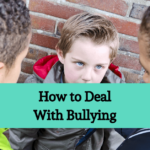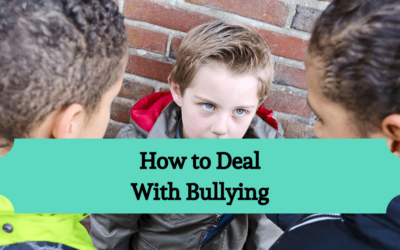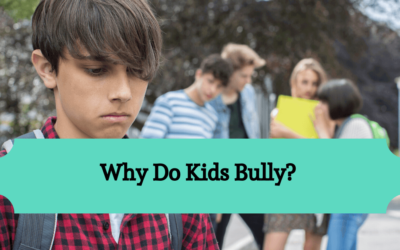No matter the age, bullying hurts as it has no boundaries when it comes to gender, ethnicity, or age. It can happen anywhere, and any time, imitation caused by another person can cause emotional distress, fear, or feelings of insecurity. Whether it occurs in the home, at work, or within the halls at school.
In this part of the series, this article will explore the varieties of bullies that children face daily. Some of the main themes among bullies are their misuse of power in a relationship, and ongoing and repeatedly, and focuses on aggressive behaviors that end up harming others.
Table of Content:
This article is part of The Anti Bullying Guide article series
Chapter 1: How to Identify a Bully: The Ultimate Guide
Chapter 2: Bullying Facts: Guide for Parents and Educators
Chapter 3: Examples of Bullying (You are here)
Chapter 4: Why do Kids Bully?
Chapter 5: How To Deal with Bullying
Chapter 6: How To Stop Bullying
Chapter 7: Effects of Bullying and Cyber Bullying
Chapter 8: Stop Bullying Websites: Online Resource List
Methods Behind Bullying
Direct or Indirect
Bullies can focus their aggressive actions towards their victims in either direct or indirective methods. If the bullying is external and involves other people, such as insulting or spreading rumors, the bullying is considered direct. However, if the harm is inflicted by damaging the victim’s social reputation or self-esteem, then the bullying is indirect.
Obvious or Hidden
Physical action – like that of punching, hitting, or any other verbal assaults – that some may label “traditional bullying” is considered blatant bullying. This can even include threats of violence or damaging or stealing a victim’s belongings. These types of bullies may resort to name-calling or insulting others about a person to harm them.
Sometimes bullying can happen when you don’t realize it when people use covert bullying techniques. They may exclude their victims from events or groups on purpose. Give threatening looks or restrict who can join activities often.
Prominent Bullying Locations
Schools
Bullying can occur in all grades within the school setting. It may appear more natural to recognize bullies within the elementary school, but it continues all the way until college and beyond. With elementary, middle, or high school students, these aggressors can range from people who want to seek attention through physical harm or use manipulation through the internet to get what they want.
Athletic Teams
Among teams, bullying can occur. One group of athletes may decide to pick on the less experienced player under the pretense of building up their self-esteem. Instead of the bullying being helpful, these actions are detrimental to the team accomplishing their goal of winning.
Technology
The computer, personal device, or cellphones are a popular place for a bully to lurk. If your child is pulling away from the family while continually checking their device, they may be dealing with a cyberbully.
Types of Bullying
Relational Bullying
Popular among younger bullies, especially young girls, this tactic turns friends against friends. This method of bullying can occur for an extended time, maybe even the whole school year, without being detected because it is over.
When a child is in junior high or high school, and they are trying to be liked or accepted, bullies play on those feelings by using groups of their peers or people as their weapon.
They enjoy using manipulative and hurting behavior towards other people by whispering about them either in front of them or just loud enough for the victim to hear. Bullies may ask the victims to share a secret only to broadcast the mystery for everyone to understand.
Or they may openly exclude your child by not allowing them to eat lunch with the group or invite them to socialize after school. Even eye-rolling, while your child speaks or constant signing during group situations, is a method. All in all, their actions are much more than what is considered pure, playful teasing.
Prejudicial Bullying
Unfortunately, there are times when bullying happens towards a specific sector of people. Instead of bullying occurring away from the eyes of teachers or adults, this type of prejudicial bullying happens more in the open. It focuses on why the victim is different from others.
Their reasons could be focused on physical or mental disabilities, social class, sexual orientation, religious reasons, or physical appearance. By harassing others for this one reason, can make the victim feel like an outcast for being bullied on a personal attribute that they cannot change.
Cyberbullying
When a bully used chat rooms, emails, social media platforms, or text messaging to abuse their victim virtually. They may use threats of violence by sharing unflattering images or videos of the person that they’re tormenting.
For the victims, cyberbullying feels like it never ends as it is attached to their social media accounts and is accessible 24-hours. They can be connected within their own homes, which is different than a physical bully who may only harm them during school. There is an increase in mental health issues among children or adults dealing with a cyberbully.
Sexual Bullying
When a bully focuses on someone’s sexuality and is repeatedly cruel to them through ways that focus on their sexuality, then you are faced with sexual bullying. Actions by these bullies can include uninvited touching, vulgar gestures, or sexual propositioning. In extreme cases, sexual bullying is a gateway to sexual assault.
Daughters may find themselves more of a target than boys. Bullies that resort to name-calling or crude actions that may come from boys, while their female friends could target them with “slut-shaming.” Especially when trying to ridicule them for the girl’s appearance, her stage in development, if she is sexually active or attractive.
Popular Kids
Among the popular groups of friends, you may often find a child that enjoys the act of bullying. They thrive on remaining in control, are systematic in their approach, so they remain unnoticed by teachers or parents due to their perfect, charismatic demeanor. However, they are not the kind and charming child but instead someone who enjoys inflicting harm on others for long periods.
Final Thoughts
Equipping yourself with the information will help you quickly recognize the signs of bullying, but it is also necessary to understand the signs to decipher which child is causing the harm.
All children want to be the center of attention – it’s natural. When a child’s reaction is aggressive in efforts to stay in control or exhibit power over others, then there is an issue of bullying.
These harmful actions can cause long-lasting emotional scars. Teaching all children at an early age that bullying is not accepted is one of the most important lessons parents can pass down to the next generation.
Table of Content:
This article is part of The Anti Bullying Guide article series
Chapter 1: How to Identify a Bully: The Ultimate Guide
Chapter 2: Bullying Facts: Guide for Parents and Educators
Chapter 3: Examples of Bullying (You are here)
Chapter 4: Why do Kids Bully?
Chapter 5: How To Deal with Bullying
Chapter 6: How To Stop Bullying
Chapter 7: Effects of Bullying and Cyber Bullying
Chapter 8: Stop Bullying Websites: Online Resource List












0 Comments